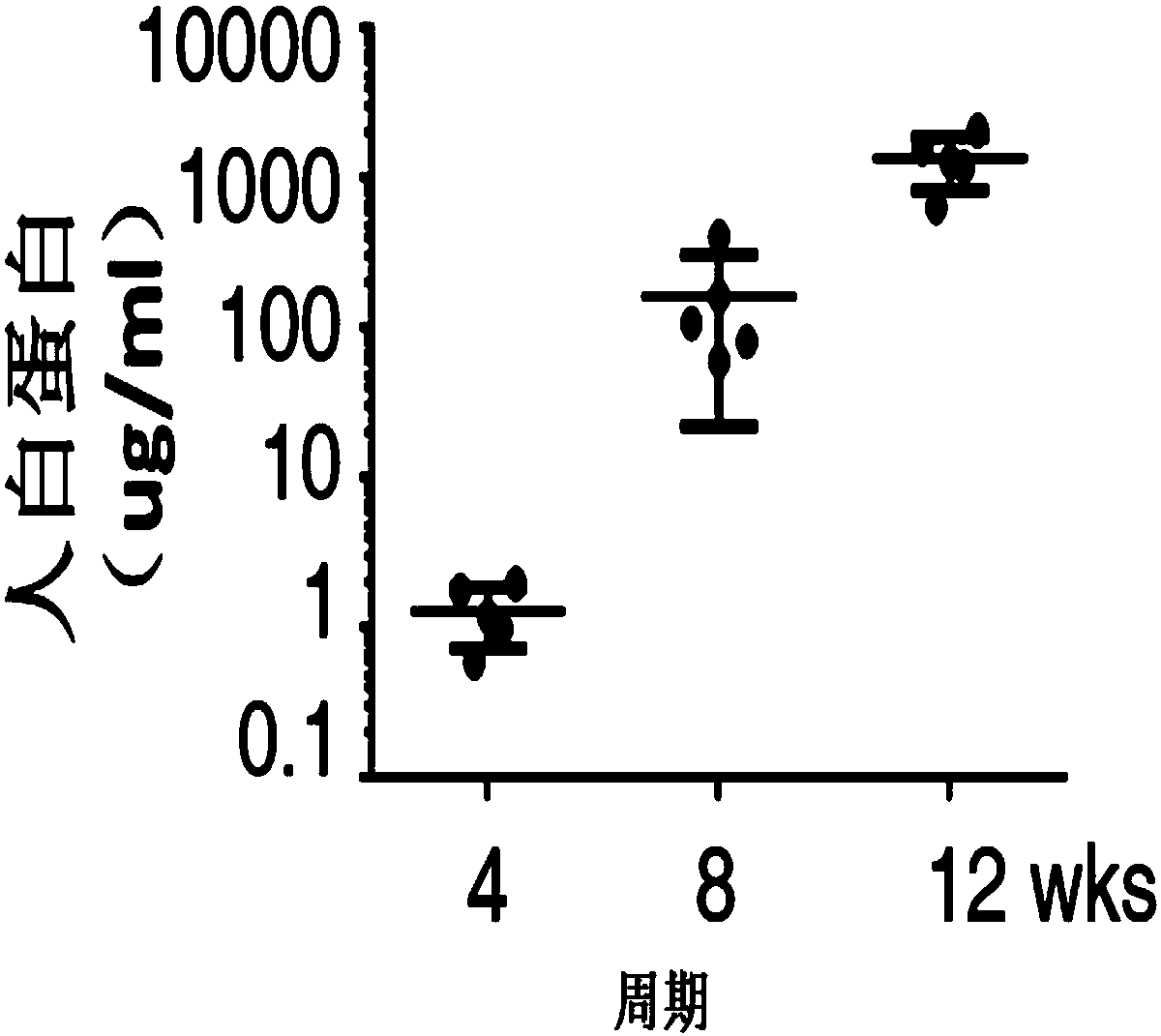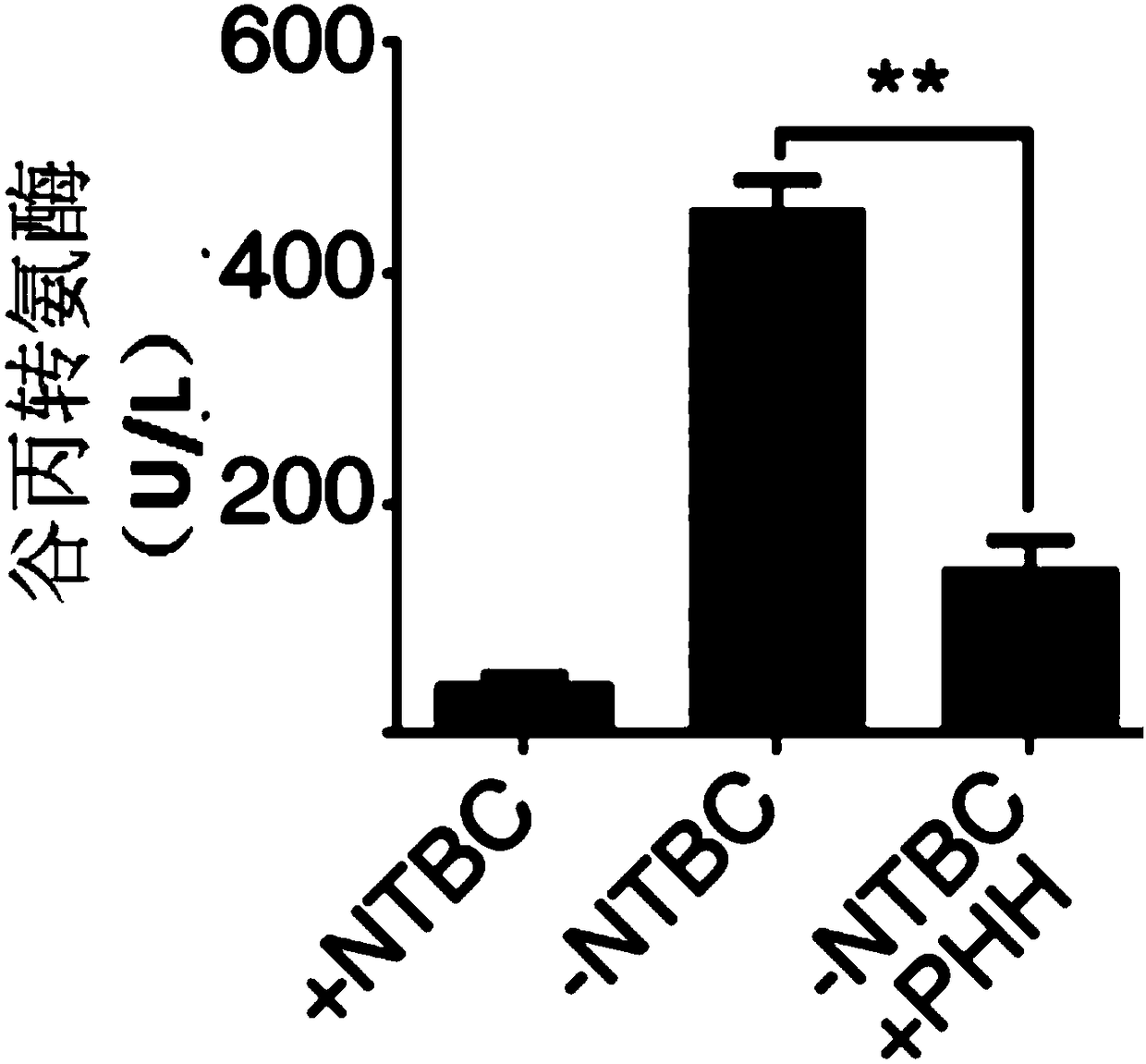New application of immunodeficient mice model
A mouse model, defect-type technology, applied in the field of biomedicine, can solve problems such as prone to rejection, achieve controllable induction of liver damage, increase expression, and high degree of immunodeficiency
- Summary
- Abstract
- Description
- Claims
- Application Information
AI Technical Summary
Problems solved by technology
Method used
Image
Examples
Embodiment 1
[0071] Example 1 In vivo expansion of human primary hepatocytes
[0072] (1) In vitro isolation of human primary cells
[0073] The human primary liver parenchyma tissue of fresh donor was separated by collagenase two-step perfusion method. The specific method was as follows: firstly, the fresh liver tissue was added with 0.4mM ethylene glycol bis(2-aminoethyl ether)tetraacetic acid under sterile conditions. (EGTA) in PBS buffer perfusion for 15 minutes (flow rate of 5mL / min); followed by adding 0.1mg / mL collagenase IV and 2mM Ca 2+ Continue to perfuse the PBS buffer solution for 15 minutes (flow rate is 2mL / min); after the digestion is complete, use ophthalmic tweezers to gently shake the liver cells to release a single liver cell, and continue to digest the undigested tissue with 0.1mg / mL collagenase IV for 20 minutes. Minutes, a large number of hepatocytes were obtained; the above cells were centrifuged with DMEM medium supplemented with 10% fetal calf serum at a speed of ...
Embodiment 2
[0082] Example 2 Mouse liver detection after transplantation of human hepatocytes
[0083] (1) Flow detection
[0084] Take mouse liver tissue and add antibody blocking receptors, add fluorescently labeled antibodies HLA-A / B / C and MHC-I under dark conditions, wash with PBS buffer twice after labeling, and then perform flow detection.
[0085] The result is as Image 6 As shown, after stopping the addition of NTBC, the proportion of human hepatocytes in mouse liver cells increased significantly.
[0086] (2) H&E staining
[0087] The mouse liver organs were fixed in neutral formic acid solution overnight, dehydrated with increasing concentrations of ethanol solutions, became transparent in xylene, dipped in wax, embedded to form wax blocks of appropriate size; cut the tissue with a microtome After slicing into 4-6μm sections, carry out dewaxing and hydration treatment; the hydrated sections are stained with hematoxylin, rinsed with running water, stained with eosin, rinsed wit...
Embodiment 3
[0092] Example 3 In vivo tracing of human primary hepatocytes
[0093] (1) Cell culture dish pre-coated
[0094] Use 0.1% gelatin (Gelatin) to pre-coat the culture dish or culture plate, specifically: dissolve 1mL 1% gelatin in 10mL DMEM medium, add it to a 60mm culture dish, shake gently to make the liquid cover the entire bottom of the dish, place Place in a 37°C incubator for 4 hours, take out the culture dish, suck off the excess supernatant, add DMEM medium to wash twice, and set aside.
[0095] (2) Culture of primary human hepatocytes
[0096] Isolate donor hepatocytes and adjust the cell concentration to 5×10 5 / cm 2 , inoculated on Gelatin-coated 60mm culture dishes, the culture medium was DMEM medium supplemented with 10% FBS+1% double antibody+10nM / mL hepatocyte growth factor (HGF); placed in 5% CO 2 After culturing in a 37°C incubator for 4 hours, replace with fresh medium to remove some unattached cells; replace with fresh medium every 2 days.
[0097] Human ...
PUM
 Login to View More
Login to View More Abstract
Description
Claims
Application Information
 Login to View More
Login to View More - R&D
- Intellectual Property
- Life Sciences
- Materials
- Tech Scout
- Unparalleled Data Quality
- Higher Quality Content
- 60% Fewer Hallucinations
Browse by: Latest US Patents, China's latest patents, Technical Efficacy Thesaurus, Application Domain, Technology Topic, Popular Technical Reports.
© 2025 PatSnap. All rights reserved.Legal|Privacy policy|Modern Slavery Act Transparency Statement|Sitemap|About US| Contact US: help@patsnap.com



